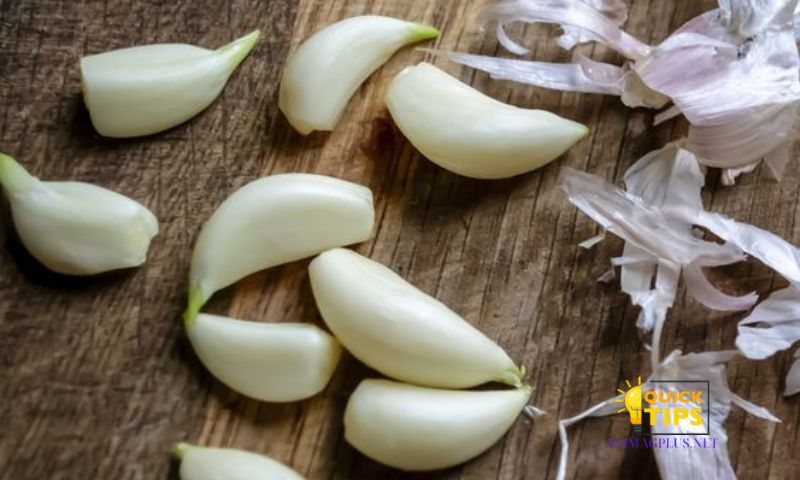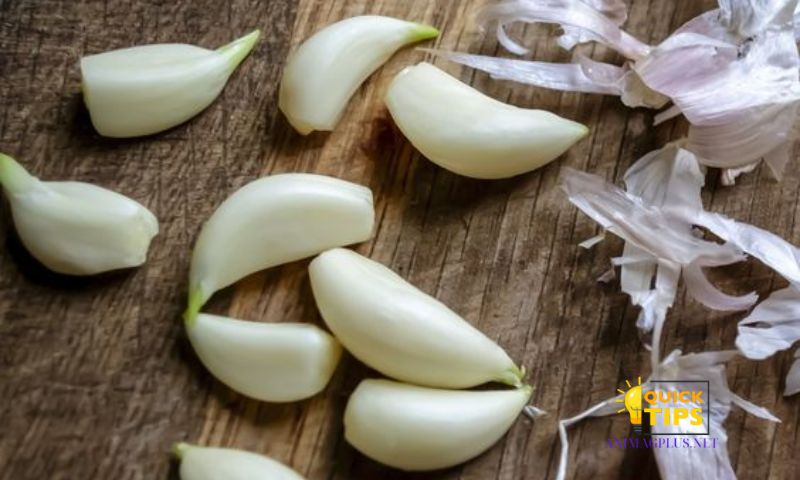In today’s busy and stressful life, facing toothache is one of the most undesirable experiences. Toothache not only causes discomfort but also reduces the quality of our daily lives. While visiting a dentist is the best option, in some cases, using natural remedies can immediately alleviate the pain. One such natural remedy that many people are interested in is using garlic to treat toothache. In this article, Animagplus will delve into the method and benefits of using garlic to reduce toothache.
Why Garlic Can Help Reduce Toothache?

Garlic transcends its conventional role as a mere kitchen staple, emerging as a powerhouse of health-promoting compounds. Rich in essential nutrients such as vitamins C and B6, manganese, and selenium, garlic boasts a diverse array of health benefits beyond its culinary allure. At the heart of its medicinal prowess lies allicin, a sulfur-containing compound formed when garlic is crushed or chopped. Allicin stands as a potent antimicrobial agent, revered for its ability to combat a spectrum of pathogens, including bacteria, viruses, and fungi.
When garlic is applied directly to the site of a painful tooth, allicin embarks on a targeted assault against the causative bacteria, swiftly neutralizing their virulence and impeding their proliferation. By disrupting the microbial ecosystem within the oral cavity, allicin not only alleviates existing discomfort but also promotes oral health by thwarting the onset of potential infections and dental maladies.
Furthermore, garlic’s multifaceted therapeutic profile extends beyond its antimicrobial prowess. Studies suggest that garlic exhibits anti-inflammatory properties, which can help mitigate the inflammatory response associated with toothache, thereby offering additional relief. Additionally, garlic’s vasodilatory effects may enhance blood circulation to the affected area, facilitating the delivery of immune cells and nutrients crucial for tissue repair and healing.
How to Use Garlic to Treat Toothache

To apply this method, you only need to follow a few simple steps:
- Prepare the garlic: Take a fresh garlic bulb and cut a thin slice from the end of the bulb. If you’re uncomfortable with the smell of garlic, you can crush or finely chop the garlic slice to reduce the odor.
- Place garlic on the painful area: Place the prepared garlic slice on the painful tooth area and gently press down to release allicin.
- Hold garlic for a certain period: Keep the garlic on the painful area for about 5-10 minutes to allow allicin to come into contact and work effectively.
- Rinse mouth: After completion, rinse your mouth with warm water to remove any bacterial plaque and garlic residue.
Note that using garlic may cause irritation to some people, especially those with sensitive skin. Therefore, if you feel uncomfortable or experience any signs of irritation, discontinue use immediately.
Benefits and Limitations

Using garlic to treat toothache offers several significant benefits:
- Antibacterial and antifungal properties: Allicin in garlic helps eliminate bacteria causing pain and inhibits their growth.
- Pain relief: Garlic can naturally and effectively alleviate pain.
- Low cost: This method is a low-cost and easy-to-implement solution at home.
However, it is also important to remember that using garlic is only a temporary measure and cannot replace visiting a dentist for comprehensive and accurate treatment. Additionally, using garlic may cause irritation or allergies in some people, so it should be used with caution.
Other Methods to Reduce Toothache
In addition to using garlic, several other methods can help reduce toothache, including:
- Medication: Antibacterial or pain-relieving medications such as paracetamol, ibuprofen can temporarily alleviate pain.
- Applying cold: Placing an ice pack or a cold compress on the painful tooth area can help reduce swelling and pain.
- Using pain-relieving mouthwash: There are many mouthwash products containing pain-relieving ingredients such as benzocaine that can help temporarily alleviate pain.
However, if toothache persists or becomes more severe, seeking advice from a dentist is essential. A dentist can provide an accurate diagnosis and recommend appropriate treatment for your condition, from treating simple dental issues to more complex dental interventions.
Before trying any natural remedies to treat toothache, it is always best to consult a dentist or healthcare professional. They can provide advice tailored to your health condition and help you effectively treat toothache.
Conclusion
Using garlic to treat toothache is a natural method that can be useful in reducing pain and eliminating bacteria causing pain. However, careful consideration and research are necessary before applying it, and it is always advisable to seek advice from a dentist before trying any treatment methods. Don’t let toothache affect your quality of life; seek professional healthcare to address the issue comprehensively and effectively.

